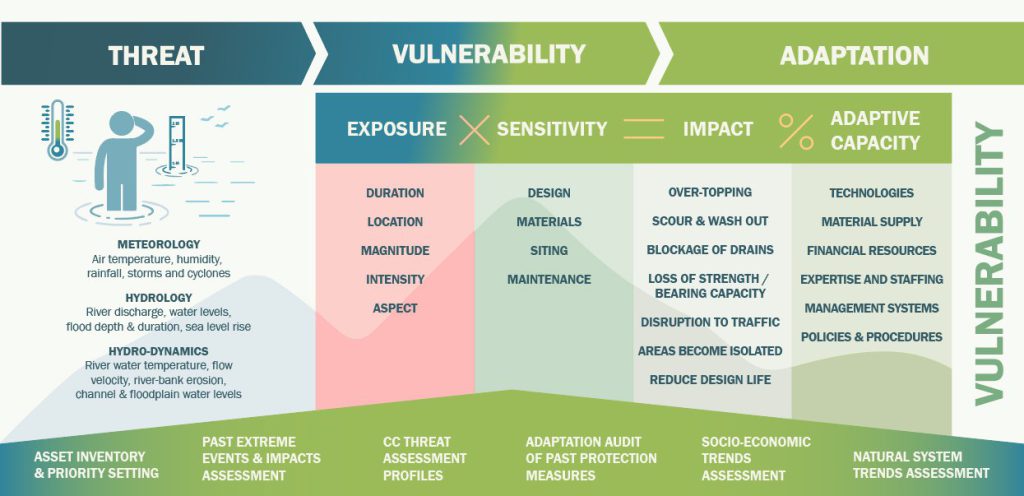Assessment framework and definitions Assessment steps Results for Battambang Templates
ICEM’s Climate Change Adaptation and Mitigation Methodology (CAM) has been used to perform the impact and vulnerability assessment for Battambang municipality.[1] The CAM is a framework and tool for the analysis of climate and other natural hazard threats and impacts, adaptation and mitigation planning and implementation and feedback (Figure 1). ICEM has developed CAM specifically for the Asia Pacific Region and has extensively tested and refined this flexible and integrative method in other climate and disaster risk management projects in the region, in rural and urban contexts, for transboundary river basins, various critical infrastructure assets and multiple ecosystems.
[1] A comprehensive CAM guide is available in English and Khmer. The guide lays out a step-by-step process for assessing climate change impacts and vulnerabilities and for preparing and implementing adaptation plans. The guide includes templates and matrices that can be used to record data, create plans, and assist with prioritizing adaptation measures.
Figure 1: Overall framework for the analysis of climate threats, impact and vulnerability
The CAM uses the following key terms and definitions:
- Hazard and threat: A hazard is an existing source of danger that may cause harm, damage or loss or poses a danger to a system vulnerable to the hazard. A hazard is different from a threat in that a threat is a potential future event, such as the threat of a landslide posed by a combination of heavy rains and a steep, unstable slope.
- Exposure: A measure of the extent to which the asset is exposed to existing hazards or potential threats. Exposure in the context of climate change is limited to potential climate threats. The exposure may depend upon the relevance of the threat (e.g., increase in temperature) to the type of asset and the extent to which the threat will increase (e.g., in intensity and frequency).
- Sensitivity: Sensitivity is the degree to which a system is affected, either adversely or beneficially, by climate variability or change. The effect may be direct (e.g., a change in crop yield in response to a change in the mean, range or variability of temperature) or indirect (e.g., damage caused by more frequent flooding due to increased water flows and volumes in rivers during extreme flood events).
- Impact: The effects of climate change on natural and human systems or assets. Often, reference to impacts refers also to secondary and tertiary consequences.
- Adaptive capacity: The ability to adjust to climate change (including climate variability and extremes), to moderate potential damage, to take advantage of opportunities or to cope with the consequences.
- Vulnerability: Vulnerability is the degree to which a system is susceptible to, and unable to cope with, adverse effects of climate change (i.e., threats and hazards), including climate variability and extremes. Vulnerability is a function of the character, magnitude and rate of climate change and variation to which a system is exposed, its sensitivity and its adaptive capacity.



